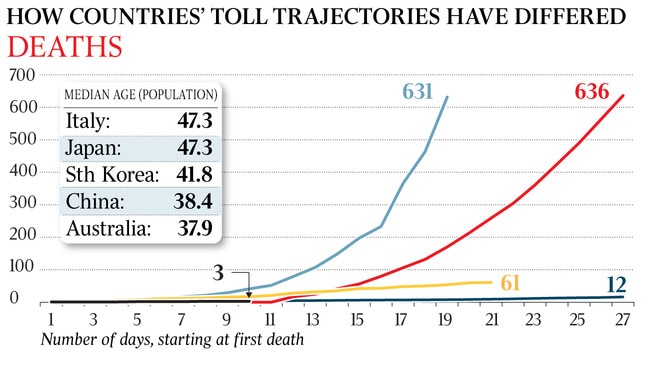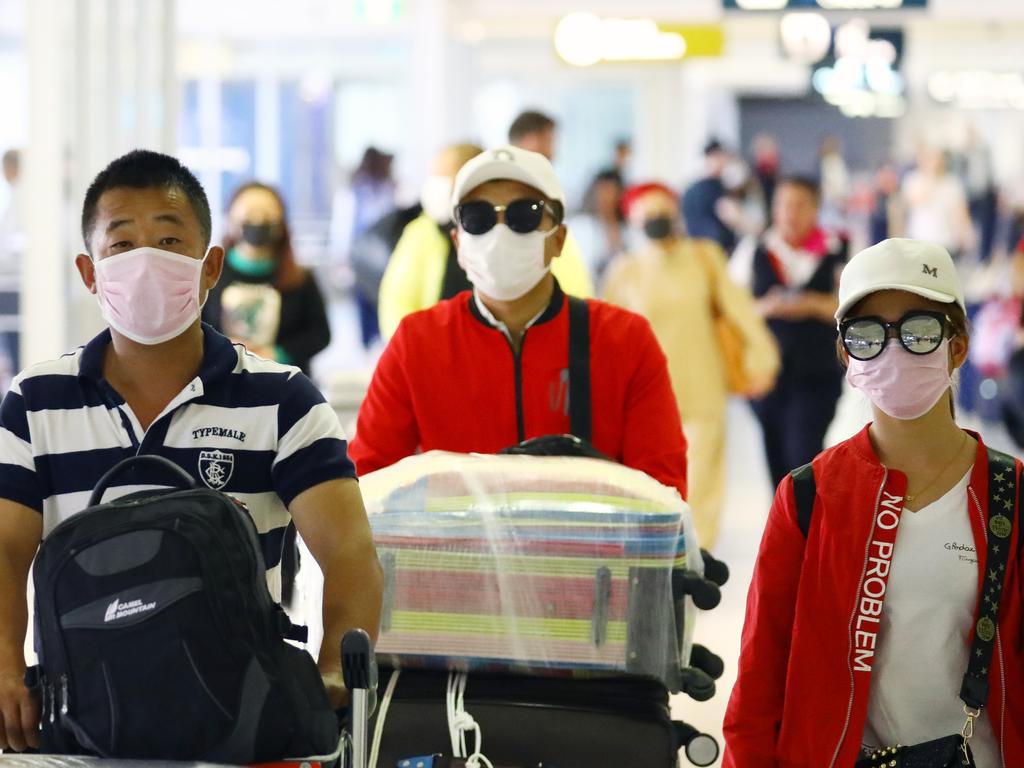Coronavirus: Should Australia close its borders? Warning on Italian path to chaos
Experts say nation can dramatically reduce coronavirus death rate if aggressive steps are taken now.

Australia could dramatically reduce its death rate from coronavirus if the government acted now to “completely” close borders, cancel mass events and shut down schools and universities, the Grattan Institute says.
Countries that have adopted radical “social distancing” measures, such as Japan, Hong Kong and Singapore, have slowed the spread of the disease within their borders, while countries with less rigorous policies — including Italy and the US — had experienced exponential growth in case numbers and deaths.
The Grattan Institute’s chief executive, John Daley, told The Australian aggressive efforts in some countries to contain the spread of COVID-19 came at a significant economic cost — but appeared to have been largely successful. “Australia has choices and there will be consequences,” Mr Daley said.
The Grattan Institute’s tough assessment came as the number of cases diagnosed in Australia, according to state health department figures released at 6pm on Wednesday, jumped to 137, having passed 100 cases only 24 hours earlier, according to the federal government’s national tally.
Other countries have reached a crossroads with the spread of the virus at the point of reporting 100 cases, with those taking dramatic measures such as border and school closures appearing to show a slowing in case tally rates and deaths.
Japan, Singapore and South Korea appeared to have had some success while the toll in Italy has climbed to alarming levels, forcing a belated shutdown and prompting the Morrison government to announce a travel ban for foreign nationals from Italy from 6pm on Wednesday.
China reached 100 coronavirus deaths just nine days after it passed 100 cases of infection, while Italy took 10 days to reach that mark. By comparison, Japan has recorded only 12 deaths, 19 days after it hit 100 cases of infection, while South Korea is up to 61 deaths, 20 days after its 100th infection.

Mr Daley said: “One option is that we can introduce very significant social distancing now and also potentially close the airports to foreign travellers.
“The consequence of that would be you would probably see the number of cases in Australia drop to zero.
“The second option is that you keep doing what we are doing at the moment. At some point it is likely that we will start to see significantly more person-to-person transmission in Australia.
“If you have relatively non-stringent measures like Italy, you would start to see the number of cases go up pretty quickly and there would be a significant number of deaths of people over the age of 60.”
A doctor who heads a string of GP clinics, Muhammad Mohsin, called for an immediate four-week shutdown of all public events, schools, childcare centres and universities, as well as mass working-from-home measures.
“I believe the only way to stop the spread of the virus is to shut down all schools, universities, businesses and public places for four weeks,” Dr Mohsin said.
“We urgently need to get people working from home, learning from home, and watching sport and other events from home.
“This is the only way we can avoid a complete and utter epidemic in Australia. Otherwise, the virus will spread and it will devastate our country and our economy. We must do it before winter arrives. This is absolutely critical.”
Health experts said international travel bans to Australia, imposed on visitors from countries with the largest numbers of coronavirus infections, were having “substantial” impact. The official advice to major events to date has been that there have been insufficient people-to-people transfers of the virus to justify a shutdown but this is constantly under review.
They said the health system could still face huge strains over the next month with the risk of widespread local transmission of the virus from undetected cases, with people showing no symptoms unwittingly infecting others.
Head of biosecurity at UNSW Raina MacIntyre said difficulties remained in controlling the virus’s spread without more testing to assist case projections.
Out of 137 confirmed cases in Australia, including three deaths — as of 6pm on Wednesday — Sydney remained the city with the highest number. Based on current estimates of a doubling of cases every six days, the Australian total could increase to more than 3200 in a month, with 15 per cent of those infected falling seriously ill and a death rate of 3.6 per cent.






To join the conversation, please log in. Don't have an account? Register
Join the conversation, you are commenting as Logout